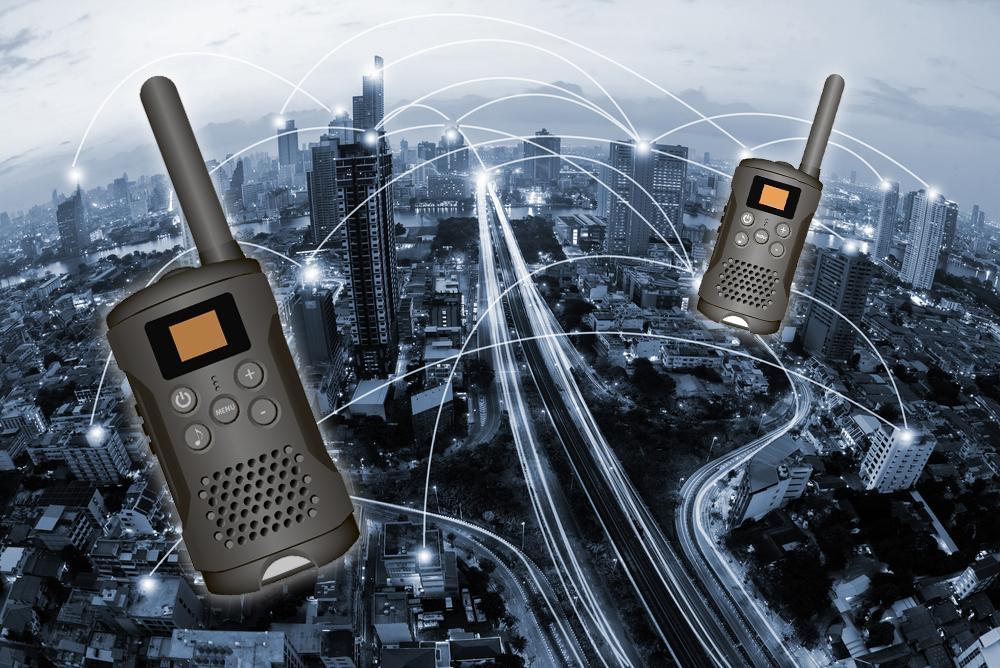Digital walkie talkies have emerged as a modern alternative to traditional analog walkie talkies. By leveraging digital radio technology, digital walkie talkies offer enhanced features, improved audio quality, longer battery life and secure communication compared to analog models. Let's take a closer look at some key aspects of digital walkie talkies.
How do Digital Walkie Talkies Work?
Digital walkie talkies use digital signal processing and digital radio technology for communication. When the push-to-talk button is pressed on one unit, the voice is converted into a digital audio stream. This digital stream is then transmitted using digital radio frequencies to the other unit. The receiving unit decodes the digital stream and converts it back into an analog audio signal which can be heard on the speaker. This process allows for private one-to-one or one-to-group communication between multiple digital walkie talkie units within a certain range.
Advantages of Digital over Analog Technology
Some key advantages of digital walkie talkies stem from the use of digital technology:
Clear Audio Quality - Digital audio delivers superior sound quality compared to analog. Background noise is reduced and voices come through clearly.
Longer Range - Digital radios can transmit signals over longer distances than analog due to more efficient use of available spectrum and frequency. Ranges of few miles are common.
Secure Communication - Digital transmission allows implementing encryption to secure voice communication and prevent eavesdropping.
Interference Resistance - Due to the ability to differentiate signals in the digital domain, digital radios are more resistant to interference from other devices operating in the same frequency band.
Long Battery Life - Digital circuitry is more power efficient. Battery life of digital models is typically 2-3 times longer than analog ones when used under similar conditions.
Programmable Channels - Memory channels can be programmed into digital radios to easily switch between different group communications.
Emergence of Wearable Digital Walkie Talkies
With the evolution of wearable technology, Wearable Digital Walkie Talkies functionality is now becoming available in form factors that can be worn comfortably like a smartwatch. Some key attributes of emerging wearable digital walkie talkies include:
Compact Form Factor - They are typically smaller than a traditional handheld walkie talkie and can fit on the wrist like a smartwatch or clip onto clothing. This makes them discreet and convenient to carry everywhere.
Interactive Color Display - Most models feature a color LCD display for viewing notifications, menus and call details. The display is interactive and allows controlling the device via touch.
Integrated GPS - Location tracking using integrated GPS enables features like tracking team members and sending distress alerts with live location sharing.
Bluetooth & WiFi Connectivity - Capabilities like Bluetooth headset pairing and WiFi connectivity allow integrating with smartphones and other devices for expanded features.
Extended Battery Life - To compensate for the smaller size, wearable models usually pack larger capacity batteries than smartphones to provide 10-20 hours of talk time on a single charge.
Waterproof Design - An IP68 rating makes most wearable walkie talkies waterproof and dustproof for usage in all environmental conditions.
Example Applications of Wearable Digital Walkie Talkies
Field workers: Construction crews, roadside assistance teams, utility technicians greatly benefit from hands-free communication using wearables.
Emergency response: Firefighters, paramedics, police officers use wearables seamlessly integrated with their protective gear and uniforms.
events: Security staff at concerts and sporting events rely on discreet communication without holding devices.
educators: Teachers supervising outdoor activities can keep contact with staff without holding devices.
theme parks: Staff at attractions need constant contact without obstructing guest interaction.
Benefits Driving Adoption of Wearable Digital Walkie Talkies
Field Efficiency - These provide truly hands-free instant communication without handling devices to maximize productivity in various industries.
Safety - Groups operating in hazardous environments can communicate easily and quickly send alerts in emergencies.
Discreet Usage - Unlike phones, wearables don't obstruct work or interaction but still enable on-the-go communication.
Mobility - Since they are wearable and lightweight, teams can stay connected even when on the move over long periods.
Cost Savings - By offering more features than phones and eliminating infrastructure needs, they prove more affordable in the long run.
Tracking - Location sharing and emergency alert buttons ensure worker safety and accountability in remote jobs.
As digital radio technology continues to evolve and prices drop further, wearable walkie talkies are certain to replace traditional handheld radios for many applications over the next decade. Their hands-free discreet form factor coupled with expanding features will make them ideal communication tools for modern mobile workforces.
In summary, wearable digital walkie talkies represent the next generation of on-the-job communication devices. By seamlessly integrating two-way radio functionality in a format that can be worn comfortably, they empower workers with instant wireless contact without needing to handle devices.
Get more insights on This Topic- Wearable Digital Walkie Talkies
